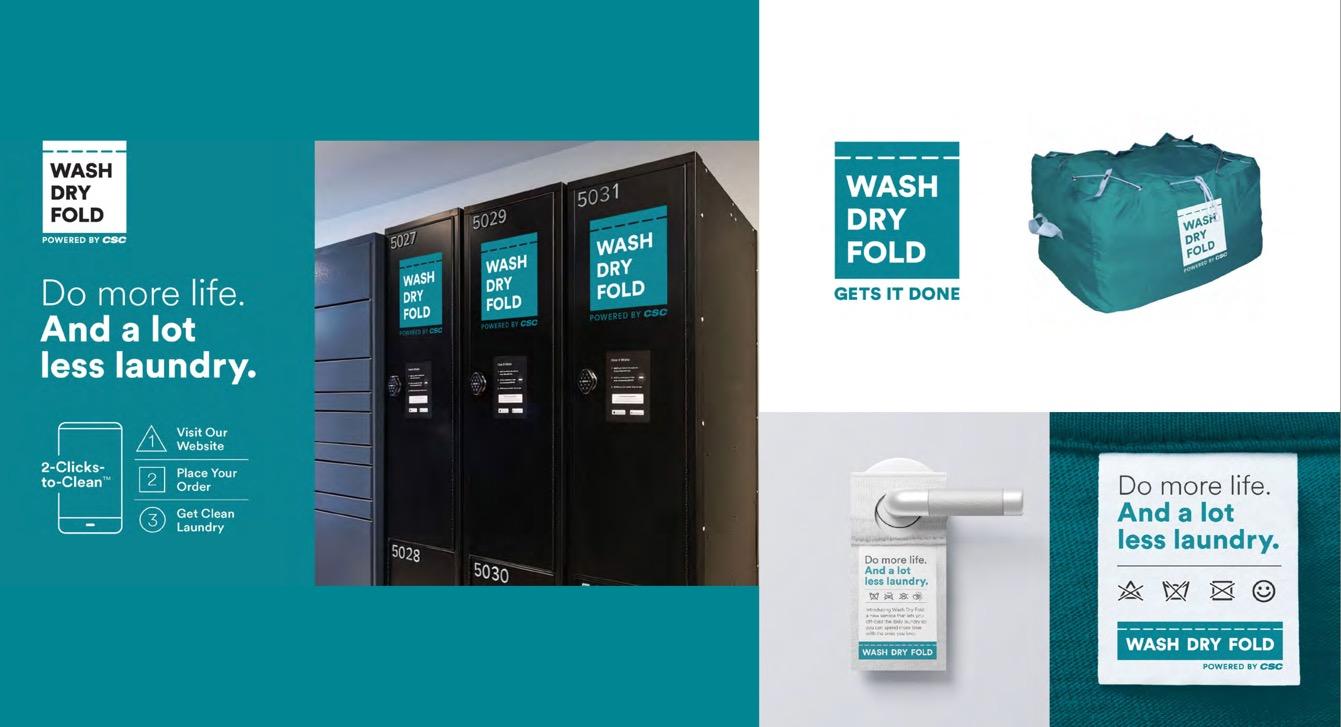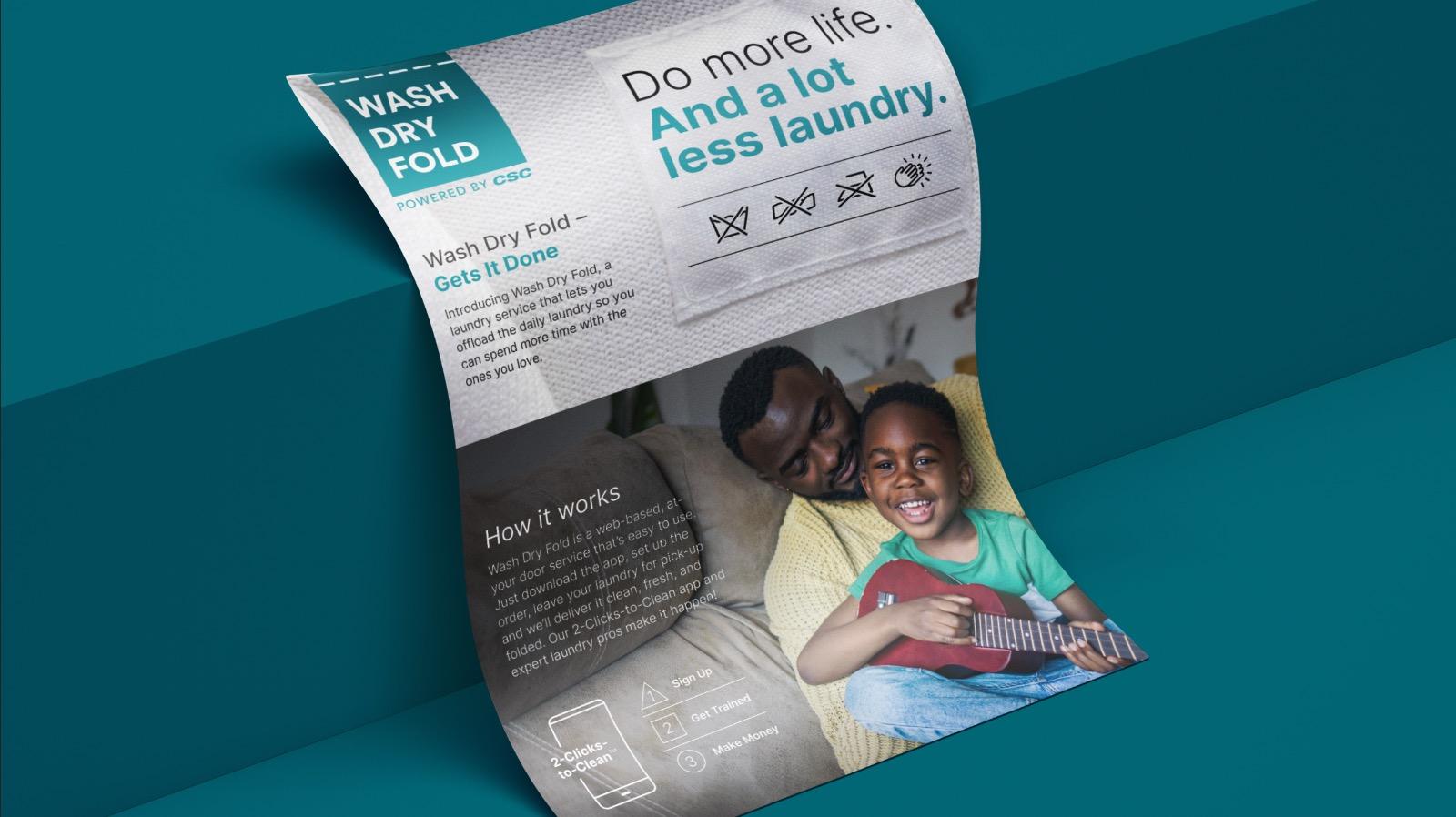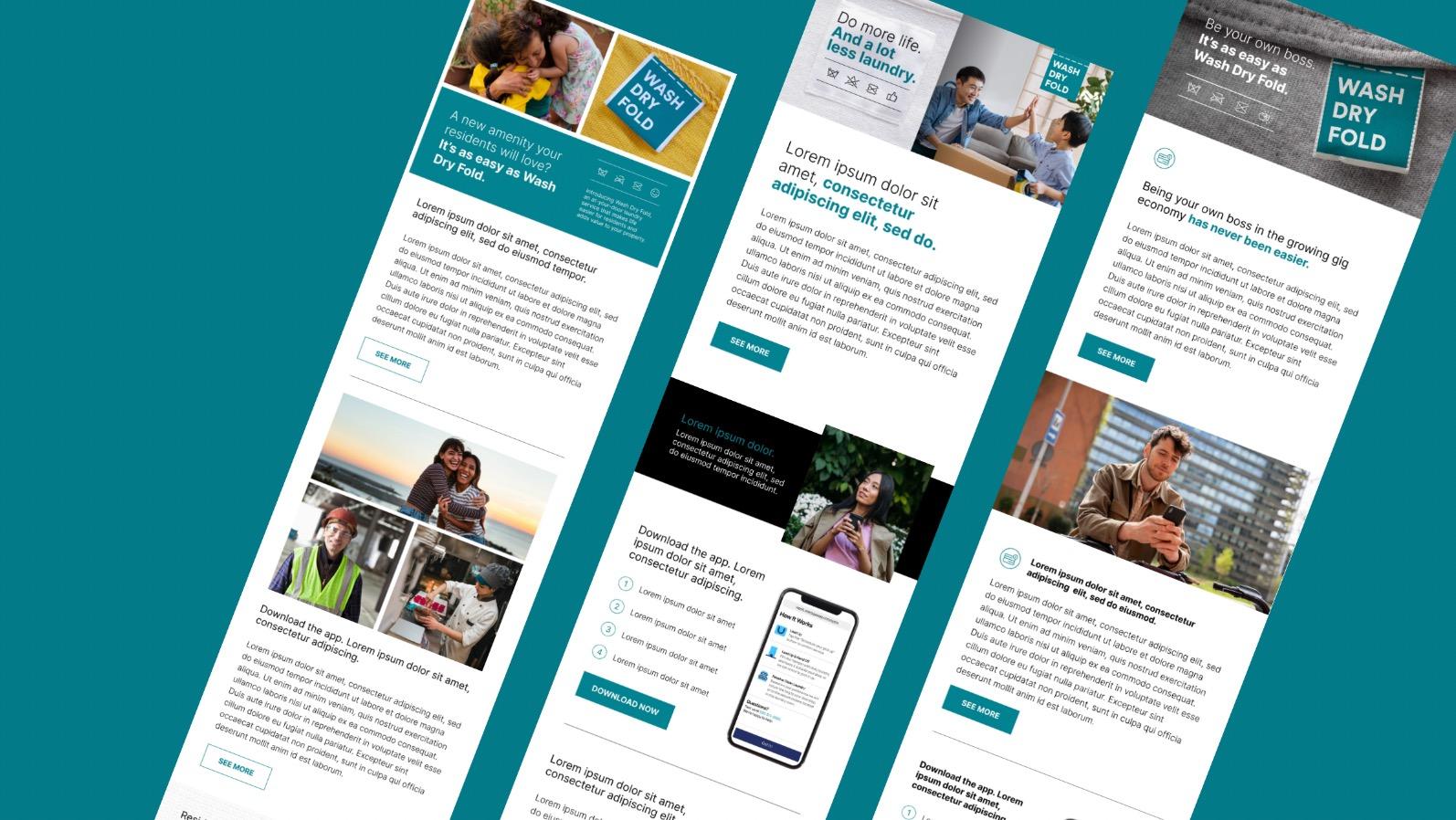Wash Dry Fold – Case Study



It’s laundry’s turn to embrace a digital future – and it's CSC’s chance to drive the change.




It’s laundry’s turn to embrace a digital future – and it's CSC’s chance to drive the change.
How do we help CSC drive meaningful innovation in an industry that is very traditional?

How do we help launch and accelerate a ‘Wash Dry Fold’ business on premise at CSC multiunit residential accounts, and have peer-to-peer gig workers fulfill the service on site?
How can we convince busy people who dread lugging their family’s laundry around to sign up for the new service and commit to using it regularly?

An intensive brand development process – fueled by company and consumer insights, paid off through messaging, design, and go-to-market assets.
DISCOVERY
• Discovery workshop
• Materials review
PRIMARY RESEARCH
INSIGHTS & IMPLICATIONS
• Key insights and implications
SECONDARY RESEARCH
• Category and competitive analysis
• Review of syndicated data
• Mix of qualitative and quantitative methodologies
• Focus Groups
• Interviews
• Surveys
• Messaging imperatives and value proposition components
• Target personas
• Service feedback
• Go-to-market recommendations
CREATIVE ROLLOUT
• Logo
• Creative Concept
• Website
• Flyers
• Email Templates
• Digital Presentation
• Brand Standards
To start, we conducted extensive research to understand how consumers get their laundry done today, gauge interest in a Wash Dry Fold service, and identify messaging and service approaches that would drive awareness, trial, and loyalty. With data in hand, we crafted a smart, dependable brand platform that gives time back in the day and freedom in consumers’ lives to do more of the things they want to do.

“Wash Dry Fold. Gets It Done” becomes the core promise of the new brand.



We now use technology to order car rides, book travel, get dinner delivered, stream movies, set the temperature, and store memories. In a society that values speed, simplification, personalization, and information in our busy lives, people want more time in their day and technology can deliver it.
Digitization across industries has become a table stakes expectation that continues to enhance and amplify experiences across many day-to-day activities.
With greater consumer digital access and engagement comes the need to elevate the service behind the systems resulting in both greater challenges and benefits.


Customers and consumers have become acclimated to digitization in recent years and expect similar benefits from the evolved technology and future innovation in the category.

The prime prospect for this WDF service are busy moms, while potential gig workers are more likely to be men supporting a family with younger kids
Three key personas emerge as prospective WDF customers – busy moms, younger single adults, and older adults. These younger segments are more likely to be already using a WDF service, have a somewhat higher laundry load and express interest in the proposed service offering. While still moderately open to the WDF service offering, older adults have a lower laundry load in general and are less likely to be currently using a WDF service.
The number one reason consumers are interested in the service is convenience. Consumers want time back in their life to enjoy the things that matter most to them, which varies across life-stage and physical ability. For younger moms and dads, having time back means spending quality family time, for younger singles, it means time to relax, and for older adults, using WDF means having the time back from physically going to the communal laundry room to manage laundry.
The primary barriers to the service overall are concerns about clothes going missing or being damaged and, when disclosed, there
Consumers underscore that a WDF company should clearly communicate measures taken to avoid damaging clothes (things like prop er training of employees, selecting preferred wash cycles, etc.). There’s a perception that communal laundry rooms are difficult to navigate (finding working or empty machines) and trigger cleanliness concerns, so paying for laundry to be processed in the CLR is barrier to use.

While the stated willingness to spend hovers at around $10 per load/hamper, amongst our mom and younger singles segments, there’s interest and willingness to spend on the ability to choose between detergent types and wash cycles, which likely can be reflected in the baseline pricing. There’s also a high degree of interest in a loyalty and rewards program that would allow loyal customers to tap into discounted rates and service-related perks. 5
Consumers give the CSC WDF service credit for safety, belonging and selflessness. Among prospective gig workers, the service also comes across as entrepreneurial and imaginative, in addition to the core tenets of being approachable and reliable.

This group is primarily made up of millennial and Gen X women living with partners/spouses and kids of various ages.

This group is primarily made up of Gen Z and millennial single men living with extended family or with roommates.

This group is comprised of older men and women, primarily living alone.

Note: The overall household income skews lower for the sample overall 78% reporting that they make < $75K a year
• Highest weekly laundry load (1 in 4 doing 5 loads or more a week)
• Share the responsibility of laundry with others in the household; may also rely on WDF
• Highest likelihood of having used WDF in the past (70%) and just under half (43%) say they use WDF on a regular basis
• Likely to have an in-unit washer/dryer
• Have strong preferences for how laundry is done (sorting, washing on different cycles, etc.)
• Moderate weekly laundry load (about half doing 2 loads or less, about half doing 3 or more)
• Have the lowest level of responsibility for doing laundry amongst groups. Likely rely on extended family and/or WDF service
• 62% have used WDF in the past and 24% say they use WDF on a regular basis
• Likely to have an in-unit washer/dryer
• Lowest weekly laundry load (3 in 4 doing 2 loads or less per week)
• Highest individual laundry responsibility
• 42% have used WDF in the past, 14% say they use WDF on a regular basis
• Unlikely to have an in-unit washer/dryer
• Do not have strong preferences for how laundry is done (sorting, washing on different cycles, etc.)




Time was a clear driver that we could build into messaging.
“Do More Life And A Lot Less Laundry” speaks to the freedom one could build into their day.

To leverage the simplicity technology provides, we developed the idea of ‘2-Clicks to-Clean’ as a proprietary feature that emphasized the web-based advantages of ordering and tracking.
Speed, personalization, and customization come shining through.










“We wanted to create a new lifestyle brand in our portfolio of services. Working with us on our new Wash Dry Fold offering, Finch led our team from research through design, leading to a suite of executions that put our company in a whole new place.
Our work with Finch established a look, feel, message and voice that will take our 100-year-old company to a new frontier with our clients and millions of consumers.

Finch engaged and educated our project team throughout the entire journey. The buy-in and advocacy that was created made our internal roll-out and deployment seamless and fun! Having worked with agencies of all sizes, we found that Finch combines the intimacy and personal touch of a small firm with credible end-to-end resources that can meet the needs of large-scale projects.”
Rick Martella – EVP Marketing , Communications, & Public Affairs, CSC
